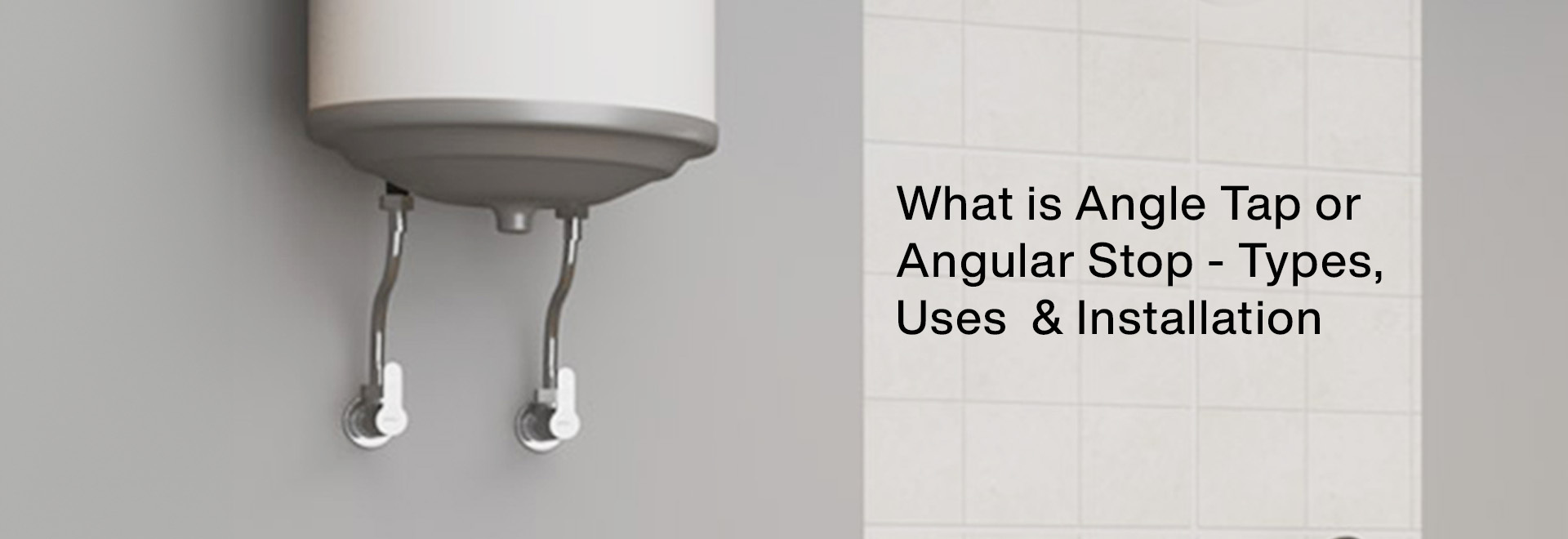Angle Tap or Angular Stop - Types and Installation
Ever noticed those little valves tucked away beneath your sink or behind your toilet? Those are angle taps, also known as angle valves tap or angle stop valves. They might not grab attention like fancy fixtures, but they're the unsung heroes of your plumbing system. Let's break down what they are, how they work, and why they matter, all in simple terms.
What is the use of Angle taps?
An angular tap is basically a valve that helps control water flow. Picture a little switch that decides whether water should flow or not, but it's tucked away at a right angle to the pipes. This design makes it easy to connect them to sinks, toilets, and other plumbing fixtures. They come in different styles and materials, like brass or plastic, to match your plumbing needs and style preferences.
Types of Angular Taps:
There are mainly two types:
1. Compression Angle Taps: These are the classic ones. They use a little washer to press against a valve seat to stop water flow. Simple, and effective, but they might need a bit of TLC now and then to replace worn-out washers.
2. Quarter-Turn Angle Taps: These are the newer kids on the block. Instead of a washer, they have a clever mechanism that only needs a quarter turn to control water flow. They're durable and low-maintenance, making life easier.
Where can you install an Angle Valve in Homes?
Angle taps have many roles around the house:
In the Bathroom: For your bathroom sink, geyser, and health faucets in the washroom you'll want something easy to use. That's where quarter-turn angle taps shine. They let you adjust water flow and temperature with a quick twist, perfect for daily routines like washing up.
In the Kitchen: In the kitchen, we use an angle valve for our RO system and kitchen geyser. This helps make tasks like washing dishes and filling pots easier by keeping water flowing smoothly.
Step-by-Step Installation:
Putting in an angle tap isn't rocket science. Here's a simple guide:
1. Turn Off the Water: No surprises here. Before you start, turn off the main water supply to avoid any leaks or splashes.
2. Prep the Area: Make sure the spot where you're installing the angle tap is clean and dry. This helps with a good seal.
3. Connect the Tap: Attach the angle tap to the water supply pipe using the right fittings. Tighten everything up securely to avoid leaks.
4. Check for Leaks: Once it's all set up, turn the water back on and check for leaks. If you see any drips, tighten things up a bit more or replace any parts that aren't doing their job.
FAQs
1. Can I Install Angle Taps Ourself?
Yes, if you're handy with basic plumbing stuff, you can usually handle installing or fixing angle taps.
2. Where we can use Angle taps?
Anywhere you need to control water flow at a right angle! Bathrooms, kitchens, laundry rooms, you name it.
3. Does Angle Valve Need to be Replaced Over Time?
Yes, angle valves may need to be replaced over time due to wear and tear.
In a nutshell, angle taps might not be flashy, but they're essential for keeping your plumbing running smoothly. They're the silent guardians of your water flow, making sure everything works when you need it to. So next time you turn on the tap, take a moment to appreciate the humble angle tap doing its job behind the scenes.






